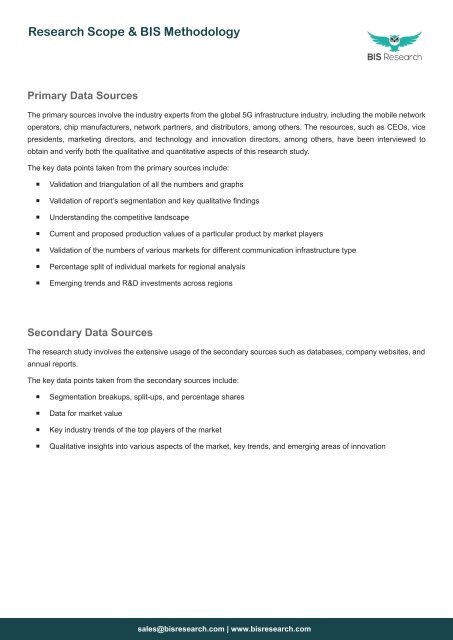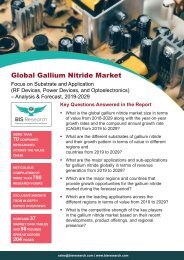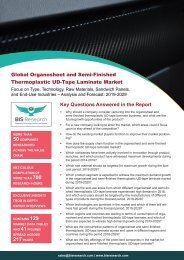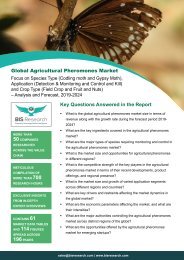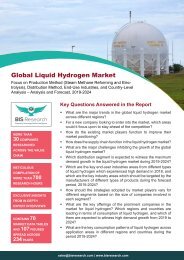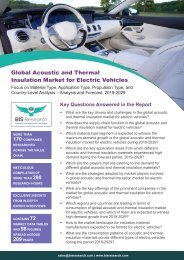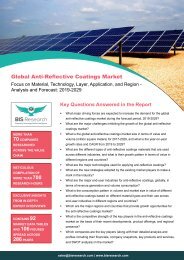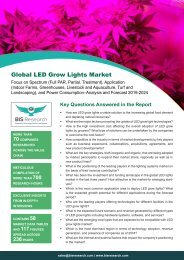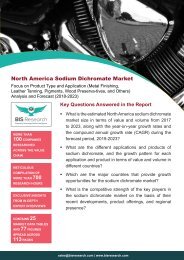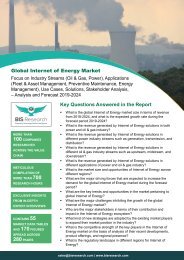5G Infrastructure Market Forecast, 2019-2025
The sub-1 GHz also known as low band spectrum is currently in service and is being used for 2G, 3G and 4G networks for providing services such as voice, MBB services, and Internet of Things (IoT). The sub-1 GHz band is ideal for providing services in wide area, outside-in, and deep indoor coverage as compared to higher frequency 5G bands, which is a major requirement for eMBB and voice services.
The sub-1 GHz also known as low band spectrum is currently in service and is being used for 2G, 3G and 4G networks for providing services such as voice, MBB services, and Internet of Things (IoT). The sub-1 GHz band is ideal for providing services in wide area, outside-in, and deep indoor coverage as compared to higher frequency 5G bands, which is a major requirement for eMBB and voice services.
You also want an ePaper? Increase the reach of your titles
YUMPU automatically turns print PDFs into web optimized ePapers that Google loves.
Research Scope & BIS Methodology<br />
Primary Data Sources<br />
The primary sources involve the industry experts from the global <strong>5G</strong> infrastructure industry, including the mobile network<br />
operators, chip manufacturers, network partners, and distributors, among others. The resources, such as CEOs, vice<br />
presidents, marketing directors, and technology and innovation directors, among others, have been interviewed to<br />
obtain and verify both the qualitative and quantitative aspects of this research study.<br />
The key data points taken from the primary sources include:<br />
• Validation and triangulation of all the numbers and graphs<br />
• Validation of report’s segmentation and key qualitative findings<br />
• Understanding the competitive landscape<br />
• Current and proposed production values of a particular product by market players<br />
• Validation of the numbers of various markets for different communication infrastructure type<br />
• Percentage split of individual markets for regional analysis<br />
• Emerging trends and R&D investments across regions<br />
Secondary Data Sources<br />
The research study involves the extensive usage of the secondary sources such as databases, company websites, and<br />
annual reports.<br />
The key data points taken from the secondary sources include:<br />
• Segmentation breakups, split-ups, and percentage shares<br />
• Data for market value<br />
• Key industry trends of the top players of the market<br />
• Qualitative insights into various aspects of the market, key trends, and emerging areas of innovation<br />
sales@bisresearch.com | www.bisresearch.com


